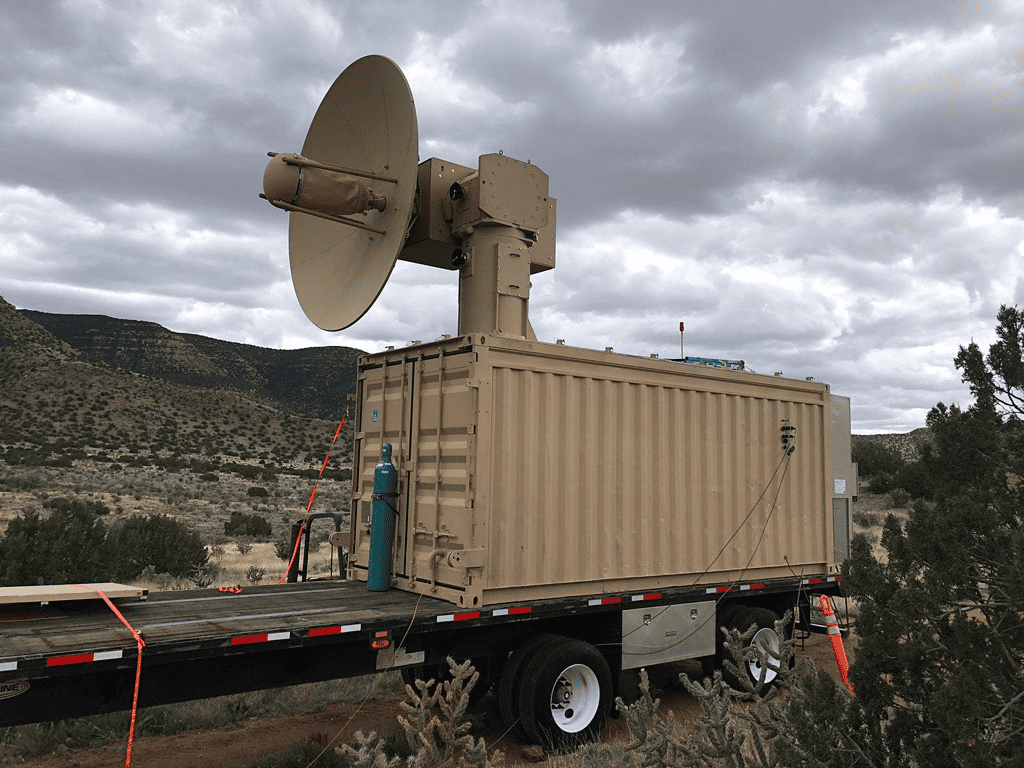As we’ve seen in Russia’s invasion of Ukraine, drones can play a big role in combat. It’s not just skirmishes and small objectives, drones are taking a more central role. Of course, with $877 billion dedicated to the military per year, the US couldn’t just let this fly by. In fact, the US military has tested a device that can counter drone swarms defensively.
THOR, or the Tactical High-power Operational Responder, is a high power microwave system that can counter drones, engaging multiple drones at a short range. In the literal arms race that’s taking shape around drones, it could be the next big thing.

If one armed drone is scary, then a swarm of drones is absolutely terrifying. Individually, each drone is vulnerable and there are a number of defense systems that can easily take out a drone. But militaries around the world are increasingly looking at using swarms of drones to overwhelm such defenses — and this is where THOR comes in.
THOR first showed off its ability earlier this year, as it engaged a swarm of multiple targets at the Chestnut Test Site, Kirtland Air Force Base.
“The THOR team flew numerous drones at the THOR system to simulate a real-world swarm attack,” said Adrian Lucero, THOR program manager at AFRL’s Directed Energy Directorate. “THOR has never been tested against these types of drones before, but this did not stop the system from dropping the targets out of the sky with its non-kinetic, speed-of-light High-Power Microwave, or HPM pulses,” he said.
THOR uses high-power microwaves to fry or disable electronic systems on a target. It’s not the first anti-drone microwave weapon. In fact, several “anti-drone rifles” have been trialed in the past, and even some drones that use microwaves against other drones. Essentially, the device terminates the drone’s contact with its operator, causing the drone to crash or become disabled.
But what THOR does differently is that it has a wide range that can be used against many targets at once. This makes it extremely useful against drone swarms — and that’s exactly its intended use.
Capt. Eric Plummer, a test engineer with AFRL’s Directed Energy Directorate who operated the system, says the test was successful and THOR essentially disabled the entire swarm.
“THOR was exceptionally effective at disabling the swarm with its wide beam, high peak powers and fast-moving gimbal to track and disable the targets,” said Lucero.
“THOR was extremely efficient with a near continuous firing of the system during the swarm engagement,” said Capt. Tylar Hanson, THOR deputy program manager. “It is an early demonstrator, and we are confident we can take this same technology and make it more effective to protect our personnel around the world.”
THOR uses a gimbaled aiming system. With this system, it can track and engage the targets in nanoseconds across broad areas of the sky, disabling them with high power microwave (HPM) pulses. It knocked out the vast majority of the drones — but not all.
“Our recent field assessment had an almost 90% effectiveness by operators in the field, who had just been trained on the system,” Wymer said. “THOR is an early demonstrator and we are confident we can approach a 100 percent kill rate by refining the hardware and improving operator training.”
Some details about the test have not been released. We still don’t know how many targets there were and what kind of drones were involved. Understandably, some details about the technology will be kept secret.
We do know, however, that THOR has a “user-friendly interface” and costs around $18 million dollars, AFRL notes. It can be powered by a wall plug and runs from a standard transport container.
Since drones are so relatively cheap and disposable, it’s important that the anti-drone system is also mobile and robust. Still, there’s some time before THOR is fit to go to an actual battlefield.
With drones and anti-drone systems, the arms race is gaining a new dimension. While scientifically, this is pretty impressive, we can only hope that these systems won’t actually have to be used in real life.






